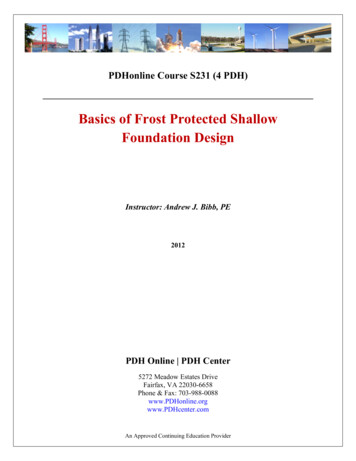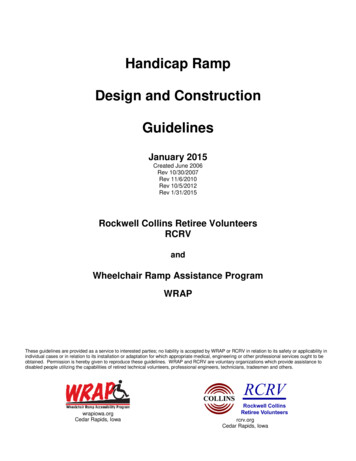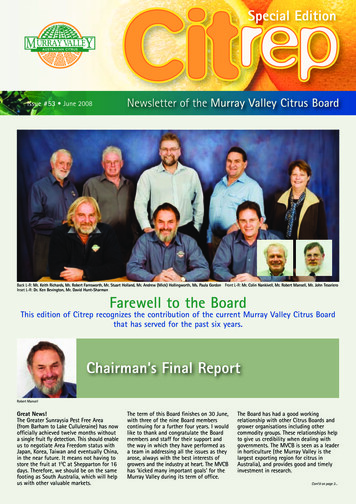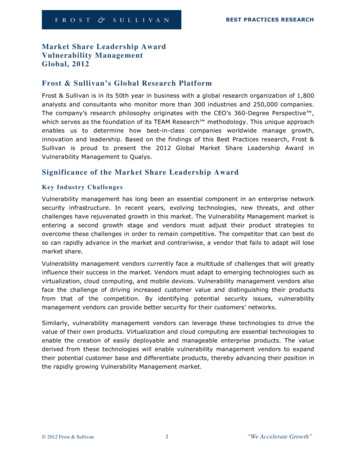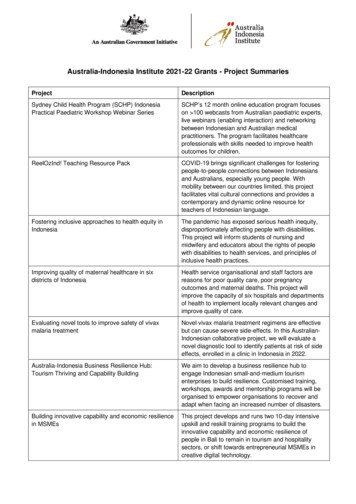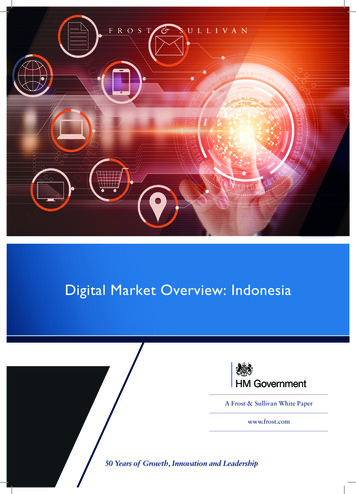
Transcription
Digital Market Overview: IndonesiaA Frost & Sullivan White Paperwww.frost.com50 Years of Growth, Innovation and Leadership
Digital Market Overview: IndonesiaOverview & MethodologyTo understand and help inform UK companies about emerging digital market opportunitiesin a number of key countries under the UK’s Prosperity Fund, the FCO (Foreign andCommonwealth Office) commissioned Frost & Sullivan to provide summary digital marketresearch and analysis across three growing digital markets; telecommunications, digital servicesand cybersecurity.The UK Prosperity Fund is an innovative instrument directing 1.2 billion of UK ODA and nonODA investment to tackle barriers to economic growth, targeting middle-income developingcountries. The Fund aims to remove barriers to economic growth in order to reducepoverty – the Fund’s primary purpose. It supports delivery of the United Nations’ SustainableDevelopment Goals (SDG), particularly SDG 8, to “Promote inclusive and sustainable growth,employment and decent work for all.” Removing barriers and helping harness the potential ofdeveloping markets, will also boost global and UK prosperity through increased investment andtrade. It is in achieving this latter objective that Non-Official Development Assistance funding isused alongside Prosperity Fund ODA programmes, and in support of the government’s postEU trade policy ambition and wider government policies.Frost & Sullivan MethodologyTo complete the project, Frost & Sullivan engaged analysts from its ICT group based in offices in Indonesia,Brazil and South Africa. Four main activities were completed during the process. These were: Internal Data Audit: Frost & Sullivan leveraged information from its ongoing research programme of the ICTsector and digital markets in the target countries. In-depth Secondary Research: Frost & Sullivan searched all open sources and published documents, includingcompany information, official government-released information and statistics, international organisations,industry-recognised associations, as well as national and international press. Conducting Primary Research: Frost & Sullivan leveraged its existing networks to speak with the majorstakeholders and industry participants within the country. Forecasting the Market Size: Frost & Sullivan constructed a propriety and bespoke data model that capturedall of the research and analysis to forecast the market size across sectors. The methodology followed asimple and transparent approach and used statistics from government-published sources as well as internalFrost & Sullivan data.3All rights reserved 2018 Frost & Sullivan
Frost & SullivanExecutive Summary. 5Key Findings. 5Market Forecast. 6PESTLE Analysis. 9Drivers & Restraints. 10SWOT Analysis. 13Base of the Pyramid. 14Telecommunications. 15Market Overview. 15Market Size. 17Opportunities for UK Firms. 20Digital Services. 21Market Overview. 21Market Size and Forecast. 23Opportunities for UK Firms. 28Cybersecurity Services. 30Market Overview. 30Market Size and Forecast. 32Opportunities for UK Firms . 35TA B L E O F C O N T E N T S
Digital Market Overview: IndonesiaEXECUTIVE SUMMARYKey FindingsChart 1: Top 7 Key findings from reportNotable trends in the Indonesian digital services market include exponentialgrowth in eCommerce, the fintech market and digital content.In terms of the competitive landscape, the Indonesian telecommunicationsmarket is fiercely contested, predominantly by global investors (Singapore,Qatar, Malaysia) and local players.The growth in mobile consumption and increasing demand fordisaster recovery services have been key in driving the cloudmarket in Indonesia, while concerns over cloud security continueto serve as a key restraint.The nation is still in the early stages of evolution in termsof its digital and financial services. Mobile and internetbanking platforms continue to grow in popularity.Indonesia’s size and geographic complexity is favourable formobile connectivity as opposed to fixed connectivity. There were78 million mobile broadband subscribers but less than 5 millionfixed-broadband subscribers in the region by 2017.Indonesia is becoming a key location for regional offices of multinationalcompanies looking to move into the South East Asian market. TheIndonesian government actively supports inward foreign investment sincethis helps stimulate the local economy.Indonesia is experiencing urbanisation. In 2016, 54% of the population lived inurban areas, but this is set to change to 65% by 2025. Investors will need toanticipate this change since it will lead to a changing pattern of consumption.5All rights reserved 2018 Frost & Sullivan
Digital Market Overview: IndonesiaMarket ForecastChart 2: Total ICT Market Forecast, Indonesia, 2016-2022 ( US Millions) 35,000 30,000 Millions 25,000 20,000 15,000 10,000 5,0000201720182019202020212022Cyber SecurityDigital Services 321.7 349.7 380.0 413.0 448.9 487.9 1,811.5 2,952.0 4,237.2 5,749.6 7,506.0 9,528.4Telecoms 22,129.6 22,739.9 22,850.1 22,692.2 22,611.2 22,537.3Source: Frost & Sullivan Indonesia Market Tracker, StatistaTelecommunicationsDigital ServicesCyber Security The Indonesian telecoms market iscompetitive, facing reduced profitmargins and saturated voice and SMSmarkets. However, data andvalue-added services are set to grow toan estimated USD 22.5 billion by 2022. Fixed-line broadband penetration islow compared to its mobilecounterpart at 1.7% and 30%,respectively. The majority of mobile subscriptionsuse 2.5G technology, but both 3G and4G uptake is increasing. Prepaidsubscribers represent 98.3% of the total. Digital services are disrupting traditionalbusiness models, with the majoritycoming from eCommerce, digitalfinance, and cloud services. Investment in local SMEs by angelinvestors and venture capitalists hasgrown since 2013 due to adoption ofdigital technologies. Digital finance is the fastest growingdigital service, set to total USD 1.25billion by 2022, followed by cloudservices at USD 1.2 billion by 2022. The Indonesian cybersecurity marketcomprises network security andnetwork advanced malware analysis.Both will account for an estimated68% of the total market by 2022. Government organisations andfinancial institutions are becomingmore vulnerable to cyber-attacks asthey produce, accumulate, andexchange data for administrativepurposes and online services.Key Focus Areas for Digital Opportunities in IndonesiaTelecommunications 4G connectivity Fixed-wireless access connectivityDigital Services Pay-TV Fintech CloudCybersecurity Consulting and Advi-soryServices Network SecurityAll rights reserved 2018 Frost & Sullivan6
Digital Market Overview: IndonesiaCountry OverviewChart 3 – Indonesia Demographics and Country MetricsKey Country Metrics (2016)Population (2016) 258.7 millionGDPUSD 941 billionJakartaGDP Growth(2017-2022)5.0%IndonesiaForeign DirectInvestmentUSD 2.1 billionCurrency(March 2018)IDR (Rp)1 USD (Rp)13,761The Indonesian telecoms market is forecast to grow from USD 22.13 billion in 2017 to USD 22.54 billion in 2022 at aCAGR of 0.37%. The digital services market is expected to grow at a CAGR of 38.33% from USD 1.88 billion to 9.53 billionover the same period, and cybersecurity is expected to grow at a CAGR of 5.53% from USD 573.5 million to 750.5 million.The information and communication (ICT) sector experienced year-over-year growth of 9.81% from USD 34.0 billionin 2016 to USD 37.3 billion in 20171. Government backing will be very important for the future growth of ICT servicesgoing forward. The government has proactively supported the ICT sector through a number of initiatives focusing oninfrastructure development, policy enabling and legislation.Economic PerspectiveGlobally, Indonesia has the 16th highest GDP ahead of equivalent neighbouring countries such as the Philippines (35th),Singapore(37th), Malaysia (38th), Vietnam (45th) and Papua New Guinea (106th)2. The economic outlook is positive due tostrong domestic growth. However, Indonesian foreign direct investment still represents a lower share of GDP compared toother countries in the region like Singapore.There are several restrictions that potential investors need to consider before deciding to invest in Indonesia. Theseinclude the fact that foreign investors are allowed a maximum stake up to 67% in any Indonesian ISP, and security consultingservices need an operational licence from the National Police Headquarters3.Moreover, a process of regulatory reform is underway, but policies and laws at local and national levels can createunnecessary bureaucracy.7All rights reserved 2018 Frost & Sullivan
Digital Market Overview: IndonesiaDemographic OverviewIndonesia’s population was 258.7 million in 2016 and is expected to grow 4.8% to 271 million in 20204. Indonesia is thefourth most populated nation in the world after China, India and the United States, and is home to the world’s largestMuslim nation.Being the largest economy in ASEAN5, with a 40% contribution to the region’s GDP, Indonesia is expected to lead thedevelopment of the AEC6. The country has abundant human and natural resources and a strategic geographic position.Chart 4: Population Structure, Indonesia, 2016Age PyramidIndonesian Population280MILLIONS60 ce by RegionIndonesia copulation - 261.1 250201620192020Break down of Average Monthly PerCapital Expenditure 2016 - 20222016258.7 MillionSumatera21%2018Key , Bali,and NusaTenggara63%2017Average Monthly PerCapita Expenditure,20162020271 Million20%48.38%(125.2m)Above USD 11248.81%(125.2m)40%34.41%(89m)USD 37- USD 11234.12%(92.4m)40%17.35%(44.9m)Under USD 11217.25%(46.75m)Source: Central Statistical Agency, Frost & SullivanFrom an ICT perspective, five islands in Indonesia contain the most inhabitants. The island with the largest populationis Java, with about 150 million people and home to the capital city, Jakarta. Sumatra is next with an estimated 54million people and situated close to Malaysia and Singapore. Sulawesi has about 20 million inhabitants, while Kalimantan(Borneo) has about 17 million people. The two smallest main islands are Irian Jaya (New Guinea) and Bali, with 4.5million people each.About 40% of the population is aged 39 or younger7. The middle-class population is set to fall slightly in percentage termsfrom 34.4% in 2016 to 34.1% in 2020. The expected growth in population will, however, see the number of people inthe middle class rise from 89 million in 2016 to 92.4 million in 2020. While the absolute number will increase due to theincreasing population over this time, there is also a lower, more impoverished socioeconomic class that will increase duringthis period.According to the World Bank, an estimated 165 million Indonesians live on less than USD 5.5 per day8.The number of internet users has grown from more than 89 million in 2015 to 104.96 million in 20179. This is an indicationthat more than 40% of Indonesians were internet-savvy in 2017, but it also means that 60% of Indonesians could not usethe internet in the same year. About 65% of all internet users are based in Java, with 15% living in Sumatera and just under6% living in Kalimantan10. The digital divide is prevalent in Indonesia, mostly because of the uneven distribution of sufficienttelecommunications infrastructure. Increasing awareness of the benefits of internet access and raising the level of digitalliteracy would help reduce the digital divide.Conversely, Indonesia’s huge population and domestic consumption base make this country a favourable platform foreconomic growth and investment potential. This makes Indonesia attractive to investors and is one advantage of operating abusiness in the country.All rights reserved 2018 Frost & Sullivan8
Digital Market Overview: IndonesiaPESTLE AnalysisChart 5: Drivers ICT Industry: Pestle Trend Analysis, Indonesia, 2017FactorsPESTLE TrendsAs part of the Nawacita program introducedin 2014, the government provides one-stopservices for the processing of investments andPoliticalbusiness licenses with a 15-day completion target.Nawacita also makes provision for technologydevelopment.11Strong economic growth is fueled by highdomestic consumption. Furthermore, in 2015,Economicapproximately 75% of online purchases weremade via mobile devices12.Growing acceptance of the internet as an efficientSocialand convenient channel to connect with the enduserDigital technologies are in the process ofdisrupting and transforming traditionalTechnological markets by enabling online platforms, reducingservice delivery times and improving end-userexperience.The Indonesian government has stipulated thatdata localization, cloud computing, and disasterLegalrecovery centres operating in the country musthave a base in Indonesia.The Palapa Ring Project is a government-ledproject set for completion in 201913. It involvesEnvironmental the installation of an undersea and terrestrialcable network that covers the five mainIndonesian islands.Implications for ICT IndustryEnabled a wide variety of new entrants and newbusiness practices to emerge in all sectors, includingfinance, transport, logistics, retail and tourism.For example, peer-to-peer lending organizationswhich connect borrowers and investors via onlineplatforms.Business expansion via Big Data analytics tosupport data flow transactions both domesticallyand internationally. This will increase eCommercegrowth to USD 130 billion by 2020.Will result in increasing market access, innovation,productivity and development in omnichannelengagement.Transforming business models in a variety ofindustries and expanding across different sectors tocater to market demandBackup and disaster recovery continue to drivedemand, especially from companies that storepersonal data. In certain circumstances, suchcompanies will need to be based in Indonesia.Opportunities exist to expand mobile broadbandcoverage beyond the greater Jakarta area, increasingcoverage in Western and Central Indonesia andexpanding into Eastern Indonesia.Chart 6: ICT Industry: ICT Readiness Index, Indonesia, 2014–2016Change in Rank2016*Score2016RankPolitical and Regulatory Environment3.78653 Economic Climate3.05851 Business and Innovation Environment4.3564-2 Infrastructure2.86105-20 Affordability5.9438-1 Skills5.1365-4 ICT Usage4.1778-9 Network Readiness Rank4.0073-9 Readiness Measure(2014-2016)*The scores for indicators are measured on a 1-to-7 scale that captures four main subindexes: Readiness, Environment, Usage, and Impact.Source:World Economic Forum9All rights reserved 2018 Frost & Sullivan
Digital Market Overview: IndonesiaAccording to the overall ICT Readiness indicators, Indonesia is ranked 73rd out of 139 countries. Conforming to theMinistry of Communication and Information Technology tasks has helped Indonesia maintain its ranking within the top 100.Such tasks include the allocation of ICT resources, the allocation of spectrum and telephone numbers, the enhancement ofservice coverage, and the regulation of service price rates.There has been some degree of upheaval with respect to telecoms infrastructure. Code Division Multiple Access (CDMA)operators were given until December 2016 to close down their networks due to falling subscriber numbers. CDMAhad also fallen out of favour with hardware manufacturers and end users. One reason was that there was no longer anycompetitive advantage in using CDMA over Global System for Mobile (GSM). However, future network readiness rankingsare set to show an improvement in terms of infrastructure. The spectrum made available by the CDMA shutdown will beauctioned off for use in the development of 3G services, and the Palapa Ring Project will launch in 2019, resulting in theavailability of more high-speed services in the region.Despite an overall decline in the Network Readiness Rank, digitisation is growing across several sectors, including financialservices, driven by the fintech boom. Moreover, deployment of digital technologies in this sector, such as Big Data and realtime communications, increases efficiency. In addition, the retail sector is enjoying the advantages of digitisation. Adoptionin this sector will lead to improved customer interactions, the simplification of business processes, and the beginning of acashless society.Drivers & RestraintsChart 7: DriversINDUSTRY DRIVERSStart-ups and small-medium businesses are expected to fuel digitaladoption in Indonesia; hence, it will increase the use of technologyservices such as cloud and cybersecurity solutionsGrowing accessibility of the mobile internet, as well as the increasingavailability of inexpensive phonesGrowing eCommerce has increased the need for financial technologyand payment gatewayGrowing focus on digital transformation across sectors has seen anincrease in expenditure on automated services1-2 Years3-5 Years6-7 YearsHMHHMMHMMHHMImpact Ratings: H High, M Medium, L LowChart 8: RestraintsINDUSTRY RESTRAINTSIndonesia’s size and geographic complexity make it a challenging marketto enter and the digital divide is apparent throughout the country.Limited access to technology and the absence of telecommunicationsinfrastructure leads to low internet penetration in several regionsNo single source of legal reference for investment restrictions ingovernment body1-2 Years3-5 Years6-7 YearsHMMHMMMMLImpact Ratings: H High, M Medium, L LowAll rights reserved 2018 Frost & Sullivan10
Digital Market Overview: IndonesiaThe vast number of SMEs in Indonesia will play a major role in the growth of digital services over the next few years. Inaddition, the expansion of LTE coverage will allow more existing mobile subscribers to use mobile broadband for morecomplex tasks such as online purchases, money transferral and communication with government organisations.Alternatively, Indonesia’s geographic make-up means that hardware installation will always be a challenge. Governmentinitiatives that draw on the points defined by the Nawacita Program14 may help bridge the digital divide.Host Government Structures and PoliciesThe Ministry of Communications and Information Technology (MCIT) comprises seven units and five experts. The units arein the chart below. The experts are special advisors to the minister on Law; Social, Economics and Culture; Communicationand Mass Media; Technology; and Politics & Security.Chart 9: Indonesia Government Structures, Ministry of Communication and ITMinistry of Communicationsand Information Technology(Rudiantara S.Stat. MBA)SecretariatGeneral(Dra. Farida DwiCahyarini, MM)Director Generalof Resources andInformation (Dr. Ir.Ismail, MT)Director General PublicInformation andCommunication(Dra, Rosarita NikenWidyastuti, MSc.)Directorate General ofPost & InformationTechnology* (Prof. DR.Ahmad M. Ramli, SH,MH, FCBARB)Head of R&D andHR (DR. Ir. YusufBasuki, MA)Advisor(Vacant)Directorate Generalfor InformaticsApplication* (SamuelAbrijani, B.Sc)Inspector General(Elly Fariani, S. Ak,MSc)* Post involved in telecommunication, infrastructure, and service providerSource: Ministry of Communications and ITThe MCIT is responsible for policies on digital government and telecommunications infrastructure. In addition, itis responsible for overseeing infrastructure projects such as the Palapa Ring Project. The ministry established theIndonesian Telecommunications Regulatory Body (BRTI) to which it delegates authority to regulate, supervise and controltelecommunications networks and services15. The regulator also organizes telecommunications spectrum auctions whichare sanctioned by the ministry.There are a number of government authorities responsible for establishing digital law and policy. They include the ministry,the Secretariat of the Cabinet, the House of Representatives and other related departments. In addition, other ministriesneed to be involved if the law being proposed comes under their authority. For example, in 2015, the government launchedthe 2020 Go Digital Vision campaign in an attempt to help boost the digital economy by targeting SMEs and helping them godigital. This scheme was implemented by the MCIT but in collaboration with the Ministry of SMEs16.The Indonesian government recently set up a new organisation tasked with providing cybersecurity for governmentinstitutions, some private companies and the public. The organisation is known as the National Cyber and EncryptionAgency (BSSN). It is headed by Djoko Setiadi, who was appointed in January 201817. Setiadi will report to President JokoWidodo. As such, some decisions have yet to be made regarding how this agency will interact with related governmentministries, but the MCIT will remain responsible for drafting legislation and regulations regarding domestic cybersecurityand network security. Prior to the existence of the BSSN, the monitoring of cybersecurity was under the authority of theIndonesia-Security Incident Responses Team on Internet Infrastructure (ID-SIRTII). All staff and responsibilities previouslyunder the authority of the ID-SIRTTI are currently being transferred to the BSSN.11All rights reserved 2018 Frost & Sullivan
Digital Market Overview: IndonesiaThe state-owned telecommunications company is PT Telekomunikasi Indonesia TBK (PT Telkom). It currently hasa monopoly to operate local and long-distance telephone services in Indonesia. However, this will soon end as thegovernment has begun deregulating the telecommunications market.In 2014, President Joko Widodo devised a nine-point program of priorities that should be addressed for the advancementof the country (known as the Nawacita Program). As part of the program, the government will reform bureaucracy andprovide one-stop services for the processing of investments of business licenses. The government will also provide fundingfor technology development, including the construction of science and technological parks.Some of the key targets include the increase and development of fixed-broadband infrastructure and mobile broadbandaccess by prioritising eGovernment, eEducation, eHealth, eLogistics, and eProcurement.Indonesia ICT RoadmapThe ICT roadmap is part of the National Development Plan 2005-2025, which is a general plan that incorporates a crossdepartmental approach across government for the improvement of countrywide systems such as transportation and utilitiesas well as national connectivity and digital services. Within the ICT roadmap, there are four main pillars which serve as thebedrock upon which the objectives of the Roadmap are achieved:Chart 10: National ICT Roadmap, Indonesia, 2005–2025Indonesia ICT Strategic Roadmap 2005-2025Vision Indonesia 2025Strengthen National Connectivity to Balance Economyand Infrastructure DevelopmentInfrastructure& SecurityAdoption &CreativeUtilisationRegulation &LegislationFundingFoundation & Pre-requisite of National Broadband DevelopmentUsersInfrastructure & Security The Palapa Ring project is the major infrastructure project that is a central part of the Indonesia BroadbandDevelopment plan (IBP) 2014–2019. The project involves the construction of a fibre-optic network comprising 35,000Km of undersea cable. The network will be operational by the end of 2018 but fully completed by 2019. The National Cyber and Encryption Agency (BSSN) launched in early 2018. Decisions regarding its specific roles andresponsibilities are currently taking place.Adoption and Creative Utilisation Adoption of digital services in the creative industry helped develop economic competitive advantage in this industry byleveraging natural resources and skillful human resources. The Indonesian government is planning to support the digitisation of 8 million SMEs by 2020. This is part of thegovernment’s aim to increase the value of SMEs by USD 10 billion by 202018.All rights reserved 2018 Frost & Sullivan12
Digital Market Overview: IndonesiaRegulation and Legislation Regulations regarding the sharing of passive infrastructure and open access have been reassessed. Spectrum management is an ongoing process, especially with respect to the recent shutdown of CDMA networks andthe development of 3G and 4G services.Funding In terms of the IBP, investment is set to total USD 23.3 billion, and in 2017 alone, the Indonesian government spentUSD 1.5 billion to improve connectivity. The Palapa Ring Project was funded via public/private partnership. Private operators are responsible for networkconstruction but will recover capital costs via the availability of infrastructure services.Main Targets:Infrastructure and Security Increased coverageof fixed-broadbandfrom 15% at the end of2013 to 71% of urbanhouseholds and 49% ofrural householdsby 2019 Increased fixedbroadband speeds from1Mbps at the end of2013 to 20 Mbps inurban areas and 10Mbpsin rural areas by 201919Adoption and CreativeUtilizationRegulation and LegislationFunding The successful launch ofcampaigns such as GoDigital Vision, such thatthey increase awarenessof the benefits of digitalservices for SMEs Finalisation of passivenetwork sharingagreements such thatoperators can launchaffordable services butstill make a profit Completion of PalapaRing project and thecreation of a sufficientrevenue stream toensure recovery ofcapital costs The successfuldigitisation of 8 millionSMEs by 2020 Successful spectrumrefarming after theCDMA shutdown inDecember 2016 and theanalogue switch off inearly 2018 Connecting thegovernment network(e-government)SWOT AnalysisChart 11: SWOT Analysis IndonesiaSWOT ANALYSIS – Indonesia13 Indonesia has a vibrant start-up ecosystem;SMEs are proliferating and thriving across thenation. It is one of the most highly connectedeconomies in ASEAN and will readily adoptnew technologies ICT infrastructure is weak and digital access islimited in rural areas. The country is still considered in a nascent stage ofdigitisation compared to other ASEAN countries. Connectivity is only focused on social media use,with far less use directed towards economic,trade, or social development activities. Security risks such as data leaks andunauthorised network access are majorconcerns among internet users. The country has a relatively weak ICTregulatory framework that covers consumerprotection, cybersecurity, and humanresources development in digital literacy. Indonesia has an average connection speed andinternet bandwidth compared to neighboringcountries. This may not be sufficient in themedium to long term. There is high demand for constant connectivity,instant information, and a growing appetite fordigital content among citizens. eCommerce and online transactions are expectedto continue to be a growth opportunity. Enterprise solutions, such as cloud, IoT, and BigData analytics, are gaining further traction.All rights reserved 2018 Frost & Sullivan
Digital Market Overview: IndonesiaBase of the PyramidBOP Industry Statistics Internet penetration is on the rise in Indonesia. In 2000, fewer than 5 million Indonesians used the internet. By 2016,there were over 97 million users20. The mobile network is more widespread compared to the fixed network and assuch the majority of internet users gain access via the mobile network. While smartphones are contributing to increased internet penetration, smartphone penetration remains low at 23.7%in 2017 and is heavily concentrated in Jakarta and the country’s secondary cities of Java and Sumatra. Fixed-broadbandpenetration was less than 1% in 2016. Poor fixed infrastructure is due to a lack of investment and Indonesia’s geographyas an archipelago, but it is hoped that the Palapa Ring project will help to increase fixed-broadband usage beyond201921. A more immediate problem is that the heavy reliance on mobile networks for internet access is straining capacity andis adversely affecting internet and telephony quality. Indonesia’s youth is leading its telecommunications revolution. Theaverage age in Indonesia is 24 years, and 60% of the population is under 39 years of age22. Young Indonesians, especially those in the rapidly growing urban middle-class areas, are early adopters of mobiletechnology and internet tec
About 65% of all internet users are based in Java, with 15% living in Sumatera and just under 6% living in Kalimantan10. The digital divide is prevalent in Indonesia, mostly because of the uneven distribution of sufficient telecommunications infrastructure. Increasing awareness of the benefits of internet access and raising the level of digital
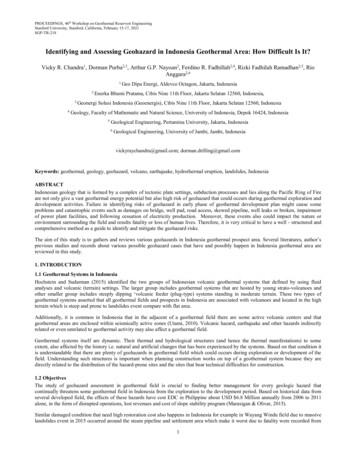
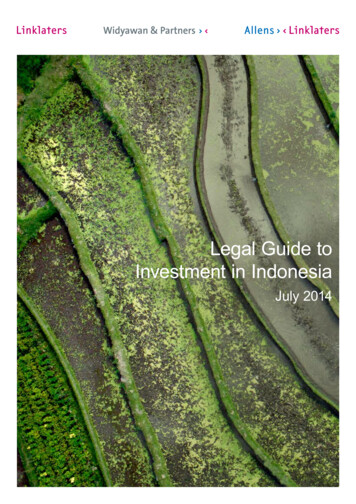
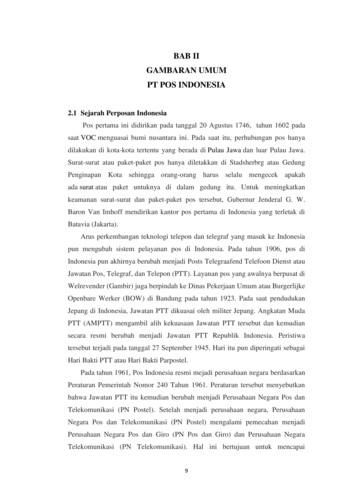

![JMK-nas-8a- [20-1-2018] revision Purwanto - Universitas WR Supratman](/img/15/cekplagiasi-plagiasi-20marketing-20politik.jpg)

